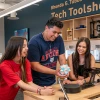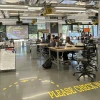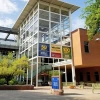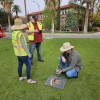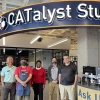Discovering the Inclusive Support Offered by Disability Resource Center
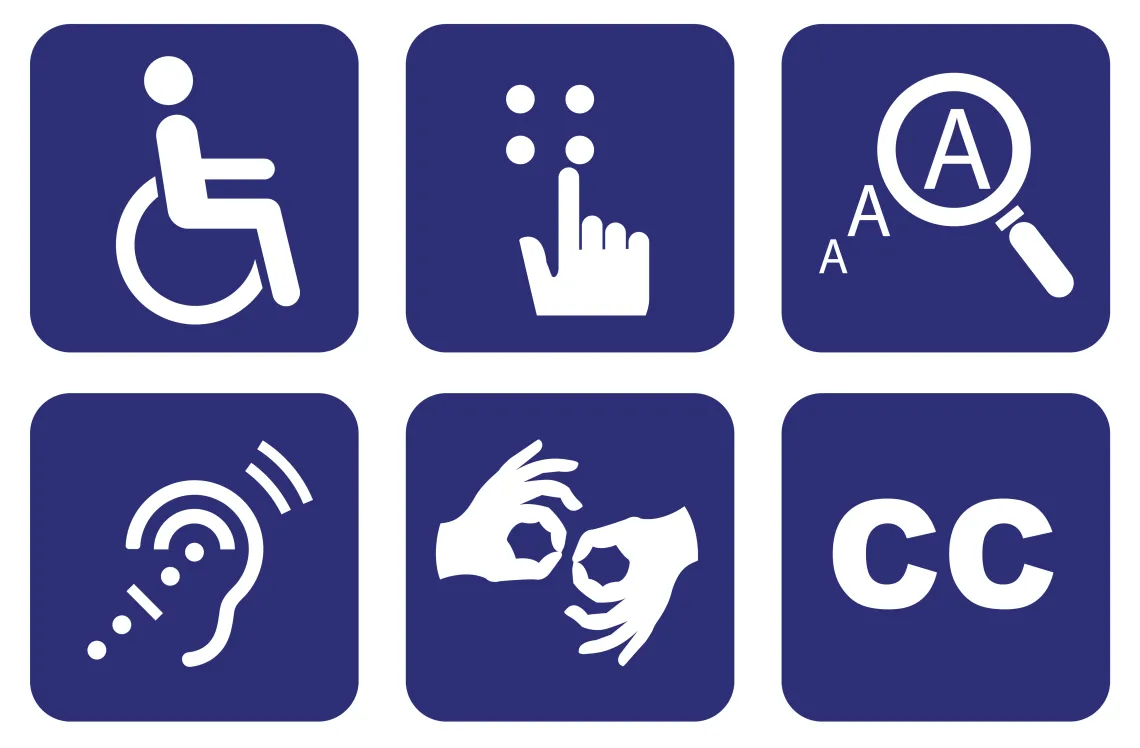
Thursday is Global Accessibility Awareness Day (GAAD), a day dedicated to raising awareness and getting people talking, thinking, and learning about digital access that provides equal information and opportunity to disabled people and diverse learners. GAAD is an important day and is a great opportunity to learn about how The University of Arizona creates a digitally inclusive atmosphere for all.
As employees of The University of Arizona, there is a lot of technology we use and share every day that has been designed and configured for ease of use. Everyone across campus has their own needs – whether it’s audio and visual needs, document accessibility, and any need to make creating and receiving information easier and more beneficial. We are fortunate to be a university with a high level of accessibility and dedication to adaptability, but that doesn’t happen on its own. The Disability Resource Center (DRC) team is deeply committed to university access and its people and works tirelessly to ensure employees and students have near-seamless experiences, regardless of any requirements or obstacles the technology presents. The goal is simple but profound: Create a culture of access where all electronic, information, and communication resources are seamlessly available to everyone.
If this sounds like a big job, it certainly is. The team is small but mighty, comprised of only two university employees bearing the weight of this large responsibility. Dawn Hunziker, associate director, and Jeff Bishop, IT accessibility consultant, are highly dedicated to the needs of everyone at the institution.
The DRC commonly addresses issues with people interacting with the learning management system with products offered on campus like Adobe, Office 365, or Google for Education. “We often get questions from faculty, staff, and students regarding any of the digital touchpoints the university offers. Our commitment is to help these people have good experiences without complications, but we are also dedicated to teaching people how to fish,” stated Bishop. By this, he means giving people the tools they need to help themselves have those positive and accessible experiences. “Whether we’re working with someone that has a disability or we’re working with someone in a department who needs to make their content accessible, our goal is to develop accessibility champions across the university so that they can elevate that work across their structures and their organizations and teach them how to fish.” These champions are essential players in the accessibility space. They help to deliver the message and importance of inclusive information, creating an atmosphere where everyone has equal access and understanding of that information.
The DRC team works both proactively and reactively. They regularly test websites and partner with developers who are working with these systems to ensure they are up to date and meeting standards. The DRC also reactively responds if an employee or student reports that they’ve experienced any kind of barrier in completing a task in a system that may be impacting their abilities.
Consultation is also a large part of the job. “We are consulting and serving as peers to be the voice for those who need access. We serve as that point of contact to make sure that the university is responding to and taking care of what we need to do for digital access,” Hunziker stated.
Much of the team’s role is in educating the university’s faculty and staff to ensure everyone knows the principles of accessibility and inclusivity. “It’s not just about one or two people doing accessibility work. It’s about collectively creating a culture of understanding for what needs to be done,” stated Bishop. When faculty and staff create content, a D2L site, generate a website, a PDF document, a flyer, etc., or create a presentation, there is a high level of accessibility that is expected and necessary. This may include ensuring the appropriate documents or resources are night-mode compatible or that there is an audio or transcript element incorporated when it can be.
There are a lot of national rules and regulations that require a level of digital disability accessibility. The DRC team affirms that the law is not their driving force behind doing what they do.
“It’s really important to understand that we do not leverage the law to teach people about what is needed. This is more about universal access, what’s right, and what makes content more accessible – not just for someone with a disability, but even for someone who’s maybe using a mobile device and needs to have access to content in a different way,” stated Hunziker. “Our work is about usability as well as accessibility.”
There are three pillars the DRC team strives for: usability, efficiency, and productivity. By striving to ensure a product is fully usable by everyone, disability or not, the result is a better design. By building efficiencies into the product, that’s better for those with disabilities and the general audience. The highest bar the team is continually reaching for within their pillars is productivity. If people can be as productive as possible within the tools they utilize, that shows a successful and inclusive product.
The DRC team regularly meets with developers, and Hunziker and Bishop are often asked for guidance on how to make websites compliant. “The first thing I tell them is let’s not talk about compliance,” stated Bishop. “Compliance is more of a legal set of requirements. Just because you meet a standard does not mean you are truly compliant.”
Hunziker and Bishop execute their standards for inclusivity by going beyond what’s necessary, and the DRC has become a leader in the nation for disability access. This level of commitment and desire to go beyond the law has allowed for Hunziker and Bishop to be invited to have a seat at the table by government officials regarding some important disability initiatives. “Legislation and regulations recently came out of the Department of Justice around digital disability resource inclusivity. Dawn and I, along with a number of other people across the United States, were pivotal in providing feedback to the government, ensuring that our input was conveyed,” stated Bishop.
The next time you interact with a piece of media from the university with ease, view a presentation with multiple ways of consuming the information, or take advantage of any of the adaptability capabilities offered for ease of consumption, think about the incredible work the DRC is doing, not only to help support those with disabilities at the university, but to support the overall usability for all.


